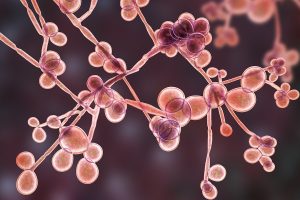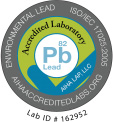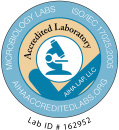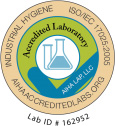 When it comes to sample testing, our lab can test for specific substances like asbestos or lead, but to test for the presence of living organisms, we can opt to use microbiology identification. In the microbiology identification process, scientists examine samples in a variety of ways and run a series of tests to draw conclusions about the presence of microorganisms in the sample. In homes and businesses, this can be particularly helpful in testing air samples for the presence of mold and microorganisms.
When it comes to sample testing, our lab can test for specific substances like asbestos or lead, but to test for the presence of living organisms, we can opt to use microbiology identification. In the microbiology identification process, scientists examine samples in a variety of ways and run a series of tests to draw conclusions about the presence of microorganisms in the sample. In homes and businesses, this can be particularly helpful in testing air samples for the presence of mold and microorganisms.
It might surprise you to learn that microbiology identification is utilized in a number of different fields beyond the testing of air in your home or business. In the medical field, microbiology testing is used to identify the presence of viruses, parasites, fungi, and bacteria that cause harm to the human body. Pharmaceutical microbiologists study enzymes, vitamins, antibiotics, and vaccines. Food microbiology surrounds the identification of bacteria and microbes that are present in spoiling foods and the foodborne illnesses they cause. When studying the environment and the atmosphere, in particular, microbiology identification is utilized to understand how microorganisms in the environment affect human health.
Microbiology testing can cover a wide range of studied subjects including bacteria, fungi, parasites, algae, enzymes, and viruses. Our skilled microbiology identification team offers a complete line of analytical methods and lab testing for the determination of mold and bacteria from bioaerosol, surface, and bulk material samples.
Types of Analysis
Because of the vast expanse of organisms that can be present in a sample and the variety of sample types that our lab sees, the microbiology identification process can take on many different forms. For more information about our sampling protocols, click here.
Viable Air Sample Analysis includes quantitative and qualitative assessments of fungi and bacteria using Andersen impaction or filtration air sampling techniques and viable culturing methods. Reports include identification to the genus and/or species level and calculated values representing colony forming units per cubic meter of sampled air.
Total Air Analysis (Air-O-Cell, Cyclex-d, Micro-5, or Allergenco-D) includes quantitative and qualitative assessments of fungal spores and environmental particles using direct light microscopy methods. Reports include identification to the genus level, calculated values representing spore and particle concentration per cubic meter of sampled air, and visual comparison of outdoor versus indoor microbial concentrations.
Direct Microscopy Analysis includes qualitative assessments of fungi using direct light microscopy methods. Samples may include tape preps, bulk material, swabs, filter cassettes, or contact plates. Reports include identification to genus level.
Viable Bulk or Swab Analysis includes quantitative and qualitative assessment of bulk material and surface swabs for fungal or bacterial content. Reports include identification to genus or if possible the species level, and calculated values representing colony forming units per gram for bulk material and colony forming units per square inch for swab samples.
When it comes to microbiology testing, leave it up to the professionals. If you need help collecting samples and testing materials, contact the SanAir Technologies team today. SanAir has developed a comprehensive web-based reporting layout that is in an easy-to-read format. You can contact us today by dialing (804) 897-1177.












